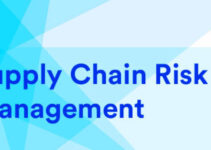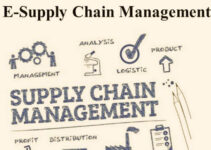The supply chain bridges the gap between the retail sector and the manufacturing industry and makes sure that both industries keep running efficiently. The disruption in the supply chain is always bound to happen and it disturbs the operations of retailers and manufacturers. Today, we’ll discuss the type of supply chain risk; the top 10 supply chain risk management strategies.
Types of Supply Chain Risks
SCRM is a strategic approach that allows businesses and companies to recognize, analyze, and reduce the risk factor that would impact supply chain processes. The main types of SC risks are as follows;
Internal Supply Chain Risks
The internal SCR comprises those factors that you can recognize with IoT capabilities, analytic programs, and assessment tools and software. The thing about internal SCR is that they are manageable to some extent, and some of the internal SC risks are as follows;
- Business Risk: It happens because of the disruption in the necessary business process and operations, reporting, management, and standard personnel.
- Manufacturing Risks: It outlines the possibility that some elements in production processes would disturb the workflow, and the company’s operations would be off schedule.
- Contingency Risk: It happens if the company doesn’t have a contingency plan to deal with unexpected circumstances
- Control Risk: Wrong analysis and poor planning would cause poorly managed production and manufacturing processes
External Supply Chain Risks
As the name implies; the external SCR comprises those factors that are outside of the reach of the organization. It is difficult to predict the external risk factors and you would require a lot of resources to manage them. Some of them are as follows;
- Environmental Risk: It comes up due to the issues in the social, cultural, political, and environmental factors
- Supply Risk: When the manufacturing unit doesn’t receive the raw material on time and causes disruption in the production processes
- Demand Risk: Poor planning of the product demand and not seeing the shopping trends cause the demand risk issues
- Business Risk: Merger and acquisition of the company would disrupt the supply chain issues
Supply Chain Risk Management Strategies
Some of the top supply chain risk management strategies are as follows;
Establishing a Plan for Risk
Once you are aware of the various risk factors both internal and external, then it is significant that you should develop a comprehensive plan. In order to further decrease the risk factor, you should involve the following SC partners in the planning;
- Customers
- Data management centers
- Transportation and carriage
- Suppliers
Diversifying Suppliers
You should diversify your primary and secondary suppliers from various regions across the world. Doing so would help you to avoid the economic, political, labor, legal, and weather issues. It allows you to deal with the potential risk factors and stay ahead of them.
Quality Suppliers
It is significant that you should conduct thorough research about the quality and competency of every supplier, and analyze various following elements;
- Stability and financial verify
- Partner interaction
- Managing employees
- Source of material
- Quality products and goods
Prioritizing Potential Risks
It is important to prioritize the potential supplier risk factor based on the probability of their occurrence. In order to realize the risk factor, you should analyze the brand and the financial impact that it would happen. You should start from the highest and most likely risk factors, and then start moving down the list.
Analyzing Risk Exposure
It is significant to recognize key risk areas, visualize various SC risk scenarios, and conduct a thorough supplier audit. It would help you to recognize the following factors;
- Labor market risks
- Regulatory
- Work relevant risks
- Geopolitical
- Political risks
You should ask yourself the following questions;
- It is relevant to beware of any reportable incident that your supplier had faced in the past.
- The qualification criteria of your suppliers and their employees; how you are aware of it.
- It is significant to know whether they require any tools, capacity, or experience.
Reviewing Risk
Any type of changes you make in your SC would initiate the chain reaction; it would amplify or reduce risk in various areas. Analyzing various risk scenarios would help you to be ready and prepare yourself for the change. If you are analyzing real-time data, it amplifies your capability to deal with business demands and questions.
Openly Share Information
It is significant to make sure that your suppliers have got updated knowledge and information about the sales forecast and dropping forecast. It would lead you to collaborate with each other to decrease any type of fallout, tackle potential problems, and predict issues and concerns.
Evaluating Insurance
It is important to make sure that your business has got trade credit insurance and cargo insurance. You should also recheck the required insurance plan of your supplier before signing the contract with them. You should save supplier insurance documents in one place, where the insurance team would evaluate and recheck the coverage plan; whether it is meeting the requirements or not.
Data Consolidation
If you are saving your business data in different places and have got many solutions, then it would baffle your work. In order to avoid confusion and make things easier, you should consolidate your data in a centralized system. That’s why you should invest in the following technology;
- Comprehensive retail system
- Data modeling
- Predictive analytics
- Taking advantage of data science
Create Risk Scenarios
You can employ data modeling, predictive analytics, and data science to create various risk scenarios. You can’t precisely predict the risky event before it happens, but you can minimize the risk. However, they would help you to create the worst-case scenario based on data science, and you can develop a contingency plan in case of an emergency.
Conclusion: Supply Chain Risk Management Strategies
After an in-depth study of supply chain risk management strategies; we have realized that SCRM strategies are significant to avoid any type of potential mishaps. If you are learning about the SCRM and various types of SC risks, then you should keep in mind the abovementioned strategies and tactics.
References
Ahsan is an accomplished researcher and has a deep insight in worldly life affairs. He goes Live 3 days a week on various social media platforms. Other than research writing, he’s a very interesting person.


